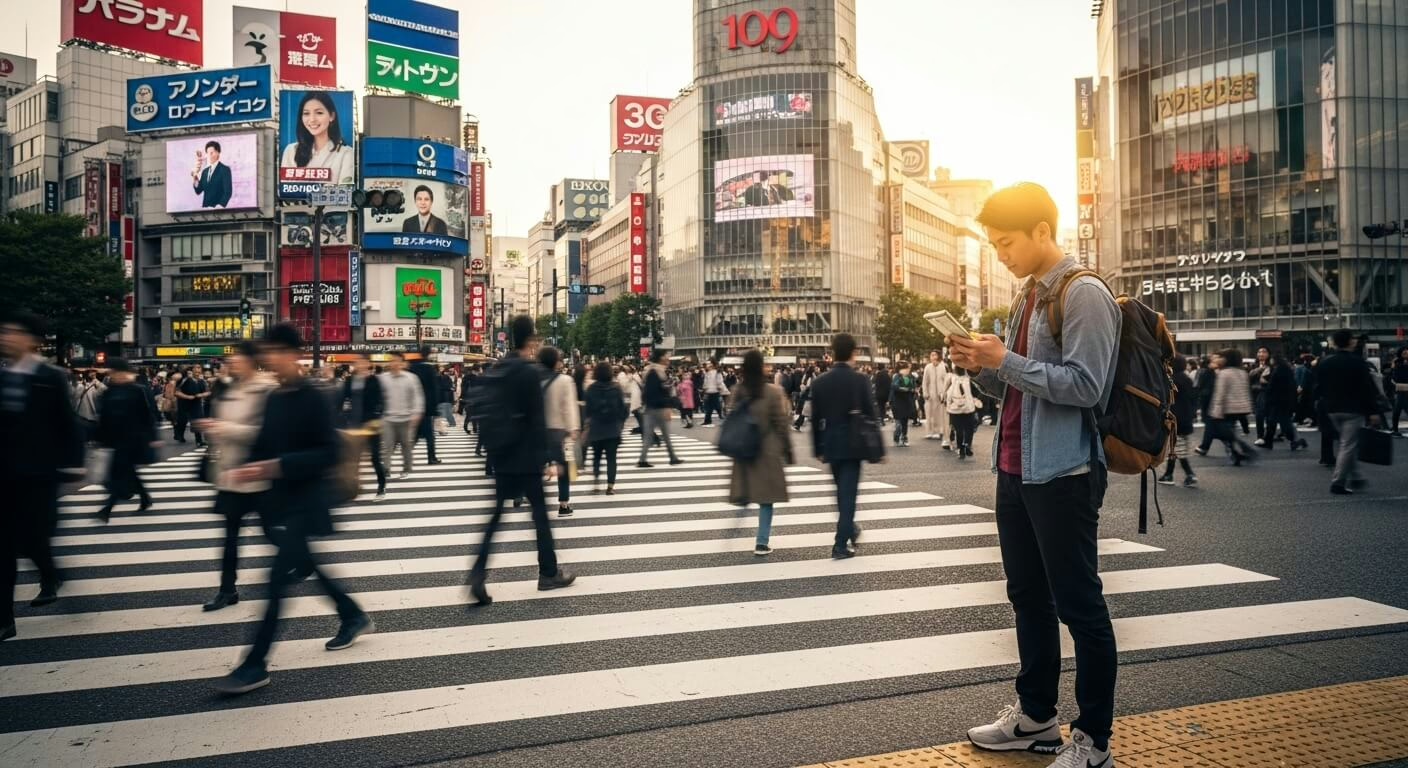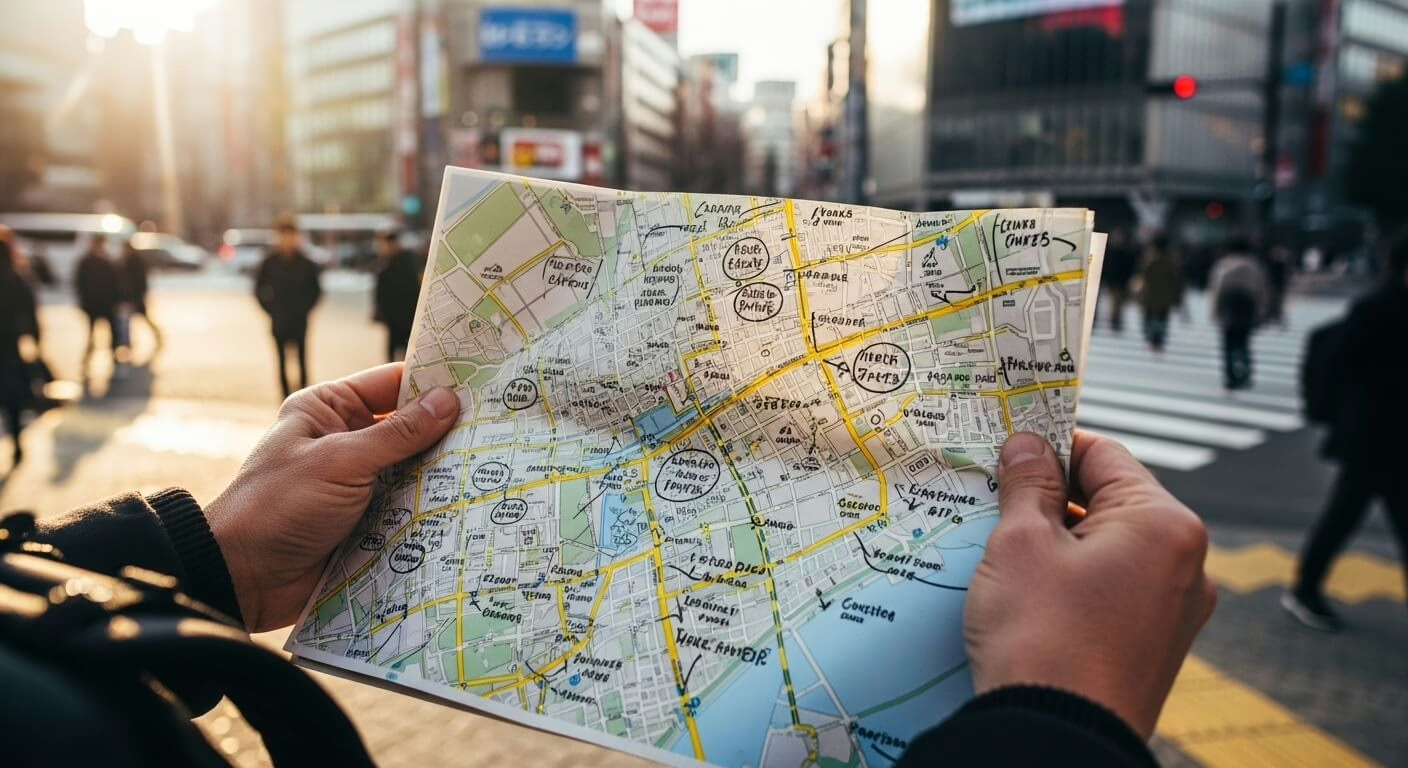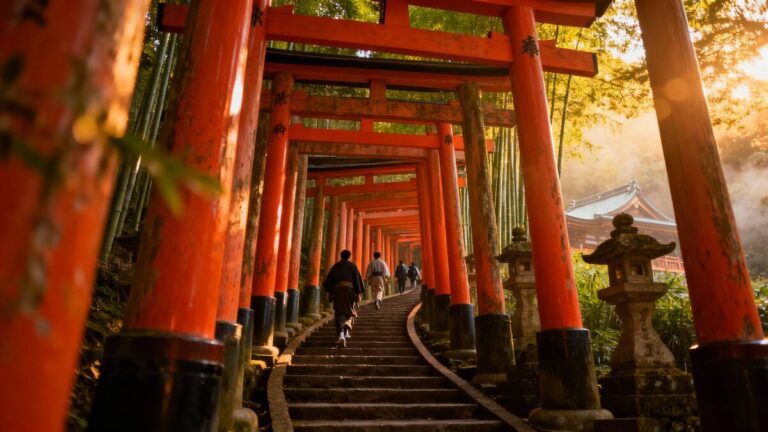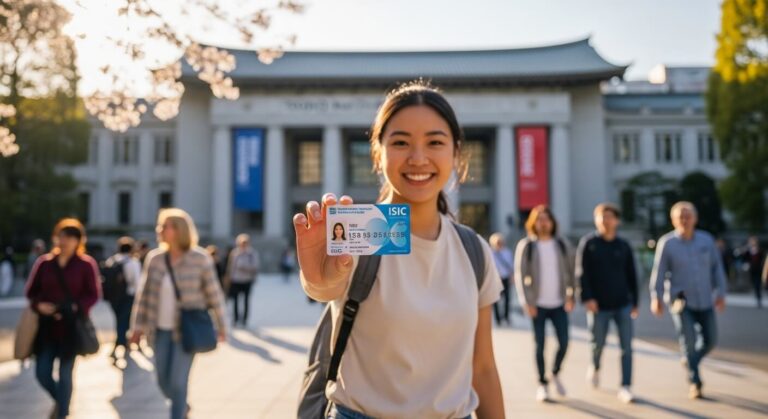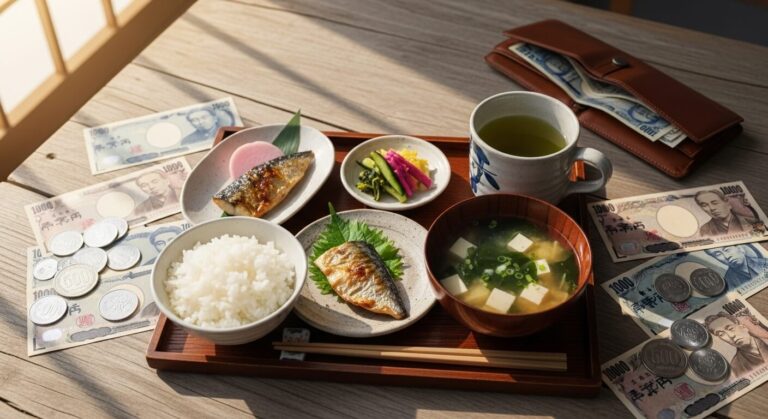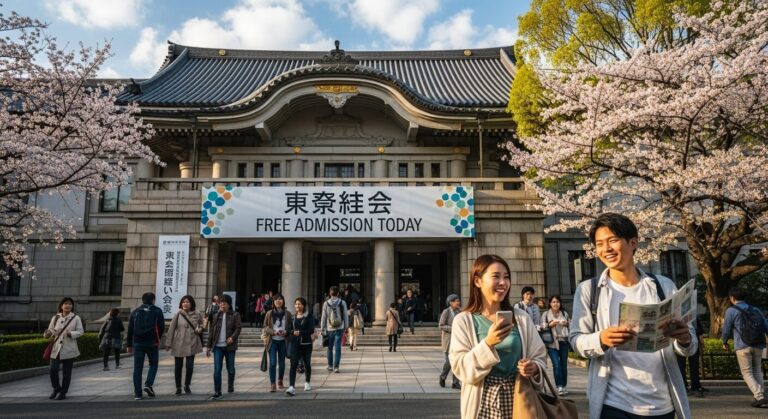Tokyo Free Walking Tour Routes: Self-Guided Budget Adventures
Walk Tokyo for Free: Complete Self-Guided Route Collection – Tokyo’s best free walking routes start in historic Asakusa at sunrise, where Sensoji Temple and Nakamise Shopping Street offer authentic culture without entry fees.
Shibuya Crossing and Harajuku’s Takeshita Street deliver modern Tokyo vibes completely free, while the Imperial Palace East Gardens combine castle ruins with seasonal beauty.
The Tokyo Metropolitan Government Building provides stunning 202-meter-high views from its 45th floor observation deck at zero cost.
Tsukiji Outer Market vendors share generous samples between 5-8 AM, and Ueno Park’s 133 acres hide temples, ponds, and free museum days.
Smart neighborhood grouping and offline maps access these budget-friendly adventures—and there’s much more to discover.
Key Highlights
Hide- Group attractions by neighborhood and time visits strategically to avoid crowds, zigzagging, and weather disruptions.
- Download offline maps and translation apps beforehand; cell service fails in underground stations.
- Start at Asakusa's Sensoji Temple early, explore Nakamise Shopping Street, and seek free craft demonstrations.
- Visit free observation decks at Tokyo Metropolitan Government Building, Caretta Shiodome, and Bunkyo Civic Center.
- Arrive at Tsukiji Outer Market between 5-8 AM for free seafood samples and authentic market experience.
Planning Your Tokyo Walking Adventure Like a Local
The secret to exploring Tokyo like someone who actually lives there isn’t about hitting every tourist spot—it’s about choosing routes that connect neighborhoods in ways that make sense and using the right digital tools to keep you from getting hopelessly lost in the world’s most confusing subway system.
Tokyo Trip Add-Ons
Equip yourself for the ultimate Tokyo adventure with the following add-ons, curated just for you.
Smart route selection means grouping attractions by area (trust me, you don’t want to zigzag across the city wasting hours on trains), while the perfect combination of apps can transform your phone into a navigation powerhouse that even works when you’re underground.
Let’s break down exactly which routes give you the biggest bang for your buck and which transportation apps will save your sanity when you inevitably take the wrong exit at Shinjuku Station!
Smart Route Selection for Maximum Impact
Getting the timing right for your Tokyo walking tour can make the difference between a magical experience and a sweaty, crowded slog through tourist masses!
Trust me, a route that works perfectly on a crisp October morning might turn into an absolute disaster during Tokyo’s humid July afternoons or when that famous cherry blossom crowd descends in spring.
The secret sauce that locals know is matching specific neighborhoods to the right time of day and season—because nobody wants to tackle the Tsukiji outer market at 2 PM in August or miss the golden hour glow on Senso-ji Temple‘s vermillion gates.
Morning vs Evening Routes: Timing Your Perfect Tokyo Experience
When most tourists randomly pick a walking route without considering the time of day, they miss out on experiencing Tokyo at its absolute best—and honestly, that’s like ordering sushi without trying the chef’s special!
Time flexibility transforms ordinary walks into magical adventures.
Morning routes offer peaceful temples and fresh fish markets, while evening strolls reveal neon-lit streets and izakaya culture.
Smart crowd management means hitting popular spots during off-peak hours!
Weather Considerations and Seasonal Route Adjustments
Just as timing shapes your Tokyo adventure, Mother Nature holds the casting vote on whether your walking tour becomes a highlight reel or a soggy disaster.
Smart travelers check weather patterns before committing to routes—nobody wants to trudge up temple stairs in a typhoon!
Pack seasonal clothing layers, because Tokyo’s climate swings from humid summers to crisp winters.
Trust me, flexibility beats stubbornness every time.
Essential Apps and Maps for Navigation Success
Getting lost in Tokyo sounds romantic until you’re actually wandering around with no WiFi and zero clue where your hotel is—trust me, you’ll want the right navigation tools downloaded before your adventure begins!
The secret weapon for stress-free exploring?
Offline maps that work without internet (because public WiFi isn’t everywhere) and translation apps that can turn mysterious street signs into readable English in seconds.
These digital helpers transform potentially frustrating moments into smooth sailing, letting you focus on enjoying the incredible sights instead of panicking at every intersection.
Offline Map Downloads That Actually Work
The reality of Tokyo’s underground train stations is that cell service gets spotty fast, and nobody wants to be that confused tourist staring at a spinning loading wheel while missing their connection.
Download Maps.me or Google Maps offline sections before departure—trust me, these offline maps actually function without internet!
The map download process takes maybe ten minutes but saves hours of wandering frustration.
Translation Apps That Save the Day
Maps get travelers to the right neighborhood, but translation apps become absolute lifesavers when standing in front of a vending machine covered in kanji or trying to decode whether that restaurant serves beef or horse meat (yes, it happens).
Also read: Useful Japanese Travel Phrases to Know Before Traveling to Tokyo
Google Translate’s camera feature revolutionizes multilingual communication—just point your phone at mysterious text!
VoiceTraTM handles spoken conversations brilliantly.
This translation technology grants independence, transforming confusing situations into manageable adventures.
Historic Asakusa and Traditional Tokyo Walking Route
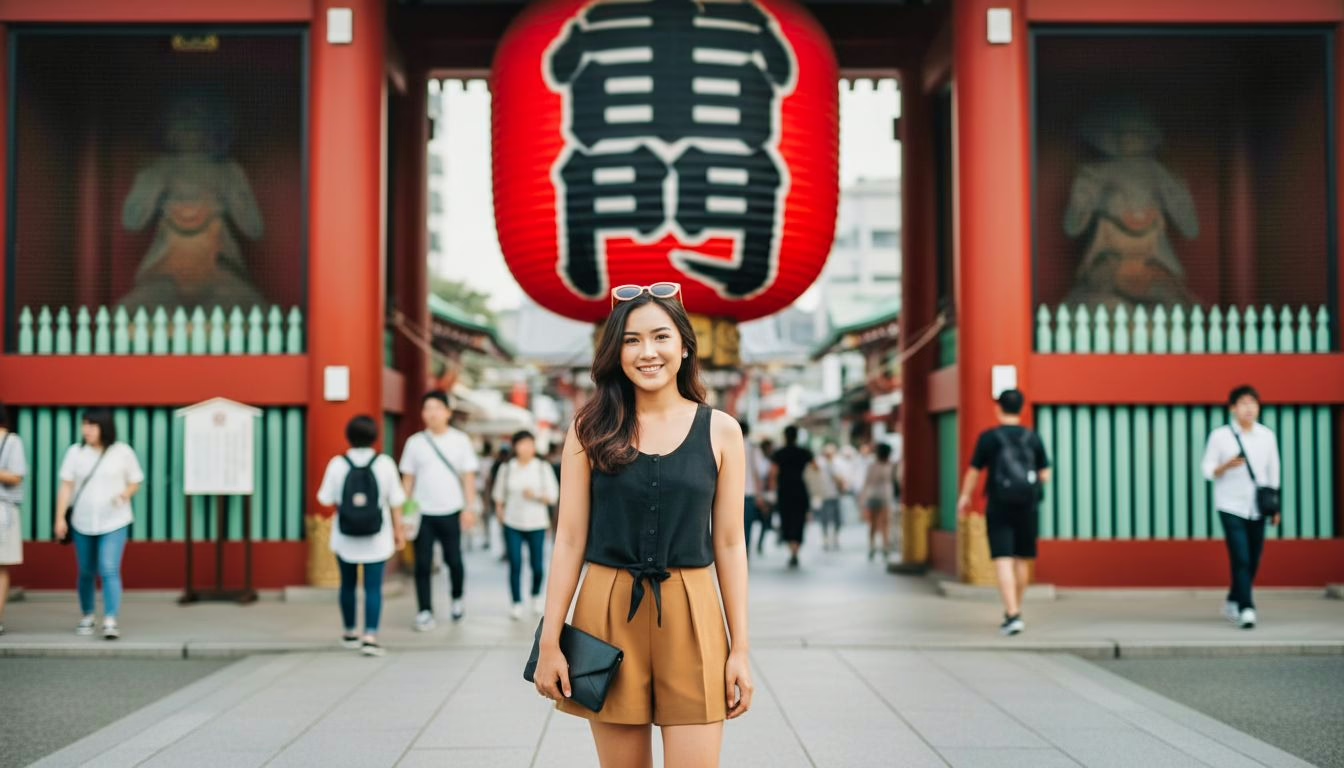
The Asakusa walking route kicks off at the magnificent Kaminarimon (Thunder Gate), where a massive red lantern weighing 700 kg greets visitors with the kind of dramatic flair that makes everyone whip out their cameras!
Beyond Senso-ji Temple’s incense-filled courtyards lies Nakamise Shopping Street, a 250-meter pedestrian lane packed with nearly 90 small shops selling everything from traditional rice crackers to handmade fans and those adorable lucky cat figurines your shelf desperately needs.
This route captures Tokyo’s soul like nowhere else—think ancient temple grounds meeting bustling vendor stalls where craftspeople have perfected their trades across generations.
Starting Point: Senso-ji Temple and Thunder Gate Magic
Most visitors stampede straight down Nakamise Shopping Street like it’s Black Friday, missing the peaceful side paths where locals actually snap their best photos.
The temple grounds hide quiet corners—early morning near the five-story pagoda or the eastern garden behind the main hall—where you can grab stunning shots without photobombing someone’s selfie stick disaster.
Trust me, skipping the overpriced “traditional” snacks on the main drag and exploring the narrow alleys flanking Sensoji reveals the authentic neighborhood vibe that makes Asakusa special in the first place!
Navigating the Temple Grounds Without Tourist Traps
Arriving at Senso-ji Temple early—ideally before 9 AM—transforms the experience from elbow-to-elbow shuffling into something genuinely magical.
Skip the main shopping street initially (save souvenir shopping for later!) and veer left toward the five-story pagoda.
Basic temple etiquette?
Bow slightly, stay quiet near prayer areas, and don’t photograph people praying.
Trust me, this respectful approach unseals hidden garden paths most tourists completely miss!
Hidden Photo Spots Locals Actually Use
While wandering those quieter garden paths, photographers clutching massive cameras occasionally appear—and they’re not shooting the obvious stuff.
They’re after backstreet shots where street food vendors set up at dawn, or tiny alleyways framing Thunder Gate perfectly.
Follow their lead!
Hidden cafes with second-floor windows offer incredible temple views without crowds blocking your shot.
Trust me, these spots beat the tourist selfie madness.
Exploring Traditional Shopping Streets and Local Crafts
After soaking in the grandeur of Sensoji Temple, visitors naturally flow into Nakamise Shopping Street—a 250-meter pedestrian lane packed with around 90 small shops selling everything from essential souvenirs to tourist traps you’ll regret buying.
The trick is knowing which traditional crafts are worth your yen and which workshops let you peek inside for free (trust me, watching a master craftsperson work is way better than owning another mass-produced keychain).
Smart shoppers can score authentic handmade items while skipping the overpriced impulse buys, all while experiencing one of Tokyo’s most atmospheric shopping experiences that’s been running since the 1600s!
Nakamise Shopping Street: What to Buy and Skip
The 250-meter stretch of Nakamise Shopping Street is basically a gauntlet of temptation where you’ll walk past over 90 vendors selling everything from handcrafted souvenirs to snacks you’ve never heard of—and trust me, not all of it deserves your yen!
Skip the mass-produced keychains and focus on local souvenirs like traditional sensu fans and ningyo dolls.
Street food sampling?
Grab fresh senbei crackers and age-manju—they’re delicious!
Traditional Craft Workshops You Can Watch for Free
Hidden between Asakusa’s souvenir shops and modern storefronts, traditional craftspeople still practice centuries-old techniques in workshops where visitors can peek inside absolutely free.
These local craft demonstrations let travelers witness authentic artistry without spending a yen:
- Edo kiriko glass cutting – Watch artisans create intricate geometric patterns
- Woodblock printing – See ukiyo-e masters carving designs
- Kimono dyeing – Observe traditional fabric transformation
Traditional craft workshops welcome curious observers!
Modern Shibuya and Harajuku Youth Culture Route

Tokyo’s youth culture reaches its peak in the electric streets of Shibuya and Harajuku, where neon lights meet rainbow-colored fashion and millions of people create one of the world’s most photogenic urban experiences.
The famous Shibuya Crossing—that massive intersection you’ve seen in every Tokyo movie—serves as the perfect starting point before heading to Harajuku’s Takeshita Street, where trendy boutiques and crepe stands pack into a narrow pedestrian paradise.
Trust me, this route captures modern Tokyo’s beating heart better than any guidebook description ever could!
Conquering the Famous Shibuya Crossing Experience
The Shibuya Crossing scramble is absolutely free to experience, but timing and positioning make all the difference between a magical moment and a frustrating crowd-surf!
The Starbucks second floor at the Tsutaya building offers the classic bird’s-eye view (though you’ll need to buy a coffee, which technically breaks our free rule), while the pedestrian walkway connecting Shibuya Station to Mark City provides an equally stunning vantage point without spending a single yen.
Visit during weekday afternoons around 2-4 PM for surprisingly calm crossings where you can actually walk at a normal pace, or embrace the chaos during Friday and Saturday evenings (6-8 PM) when up to 3,000 people flood the intersection in a single light change—trust me, both experiences are worth it for completely different reasons!
Best Viewing Points That Cost Nothing
Standing above Shibuya Crossing from a strategic vantage point transforms this chaotic intersection into pure visual poetry—and you don’t need to spend a single yen to witness it!
Top Free Viewing Spots:
- Starbucks second-floor window seats (budget dining tip: buy one drink, stay hours!)
- Shibuya Station pedestrian walkway overlooking the scramble
- Magnet by Shibuya 109 rooftop, where street performances often happen below
Trust me, these angles beat any paid observation deck!
19 Best Free Things to Do in Tokyo
Astonishing free attractions await in Tokyo, from ancient temples to futuristic ... Read More
Peak Times vs Quiet Moments Strategy
After securing your perfect viewing angle, timing becomes everything when experiencing Shibuya Crossing at its most dramatic—or peaceful.
Want the full chaos?
Hit it between 5-8 PM weekdays when crowd density reaches spectacular levels—we’re talking 3,000 people per light change!
Prefer breathing room?
The quiet hours before 9 AM offer surprisingly serene crossings.
Both experiences reveal different Tokyo personalities!
Harajuku Fashion District and Takeshita Street Adventures
Harajuku’s Takeshita Street transforms into a living runway where everyday pedestrians become the fashion show—just post up near the entrance on a weekend afternoon and watch the parade of cutting-edge street style pass by, completely free of charge!
The cramped shopping arcade overflows with dozens of quirky boutiques selling everything from rainbow-colored wigs to gothic Lolita dresses, and here’s the best part:店員 (ten’in, meaning shop staff) actively encourage browsing without any pressure to buy.
Trust me, you can spend hours wandering between vintage clothing stalls, crepe stands, and accessory shops that look like they exploded in a glitter factory, all without spending a single yen if you’ve got willpower!
Free Fashion Shows Happening Daily
Where else can visitors witness a constantly evolving fashion spectacle without paying a single yen?
Harajuku’s streets deliver daily runway highlights showcasing cutting-edge fashion trends:
- Weekends on Takeshita Street – cosplayers and Lolita fashion enthusiasts parade their creativity.
- Omotesando intersection – street-style photographers capture trendsetting locals.
- Yoyogi Park entrance – subculture gatherings display bold, experimental outfits.
Trust me, this beats any ticketed fashion show!
Quirky Shops That Welcome Browsers
Beyond admiring the street fashion parade, visitors can step inside some of Harajuku’s most wonderfully weird shops without any pressure to buy.
These quirky shops encourage wandering—gawk at capsule toy collections, rainbow wigs, or vintage band tees!
Japanese browsing etiquette is super relaxed here.
Store staff expect curious explorers, so feel free to photograph displays (politely!), try on wild accessories, and embrace the creative chaos without opening your wallet.
Imperial Palace and East Gardens Cultural Walk
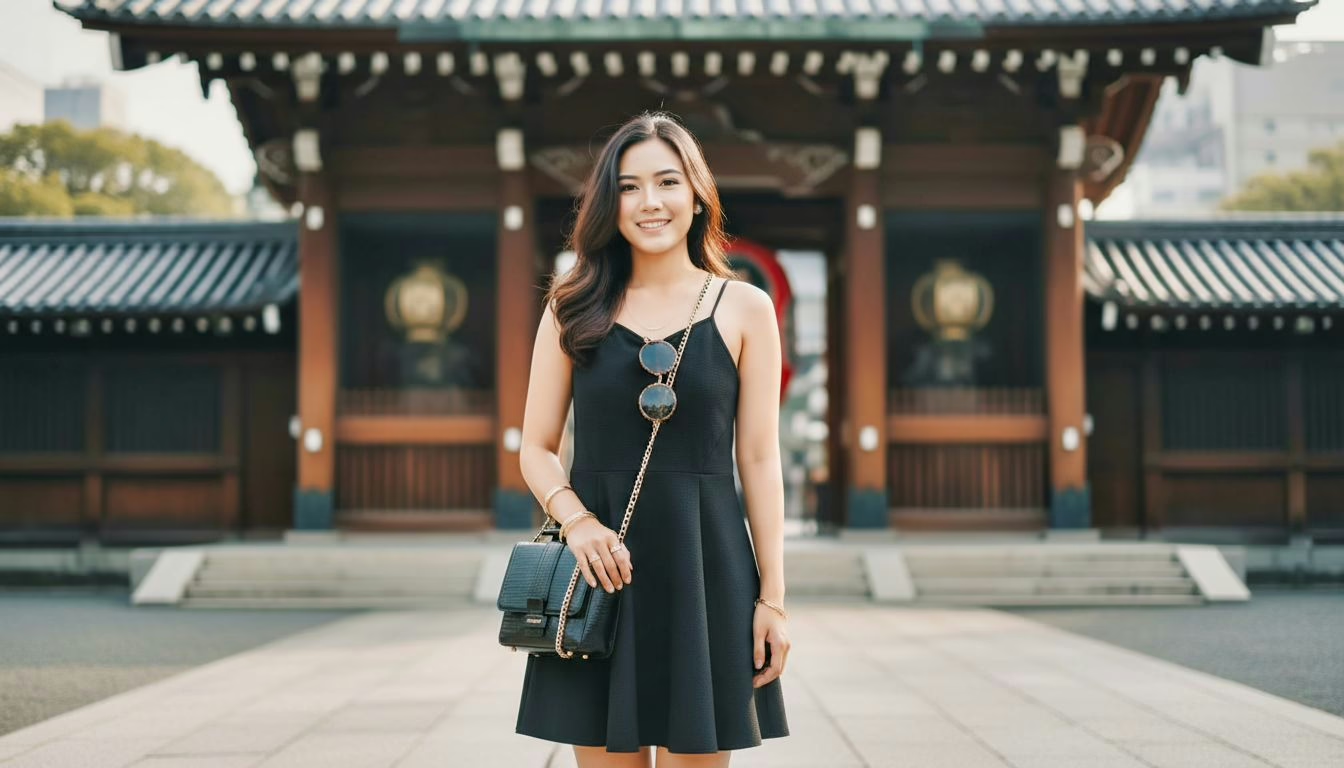
Right in the heart of Tokyo sits one of the most historically significant spots you can visit without spending a single yen—the Imperial Palace and its stunning East Gardens!
This walking route combines Japan’s royal heritage with some seriously impressive modern architecture from the surrounding business districts, giving you a perfect mix of old meets new.
Trust me, the contrast between ancient palace walls and gleaming skyscrapers creates photo opportunities you won’t find anywhere else in the city.
Discovering Japan’s Royal Heritage for Free
The East Gardens offer something magical every single season—from explosive pink cherry blossoms in spring to fiery maple leaves in autumn—making them worth visiting multiple times throughout the year.
These former grounds of Edo Castle aren’t just pretty though; they’re packed with actual historical treasures like the massive stone walls that samurai once guarded and the foundation ruins where shoguns made decisions that shaped Japan.
Best part?
You can wander through centuries of imperial history without spending a single yen, and trust me, the cherry blossom spots here beat many of Tokyo’s crowded paid gardens!
East Gardens: Your Gateway to Imperial History
Nestled within the heart of modern Tokyo lies a serene oasis where ancient stone walls whisper tales of shoguns and emperors—and the best part?
Entry to these Imperial gardens is completely free!
Trust me, the garden history here spans 500 years of Japanese culture.
Must-see spots include:
- Original castle foundations from the 1600s
- Traditional pine groves perfect for contemplation
- Seasonal blooms that’ll make your Instagram pop
Seasonal Highlights and Cherry Blossom Spots
Spring transforms these imperial grounds into something straight out of a dream, with over 280 cherry trees creating tunnels of pink petals that literally take your breath away.
Cherry blossom viewing here runs late March through early April—absolutely free!
The seasonal blooms attract crowds, so arrive early morning for peaceful wandering.
Trust me, it’s worth setting that alarm for!
Surrounding Business District and Architecture Gems
The area surrounding the Imperial Palace transforms into one of Tokyo’s most fascinating architectural playgrounds, where gleaming corporate towers stand just blocks away from centuries-old structures that somehow survived wars, earthquakes, and the relentless march of development.
Trust me, you don’t need to spend a single yen to enjoy some seriously impressive views from observation decks in buildings like the Marunouchi or Tokyo Station areas—yes, free observation spots exist in this expensive city!
Even better, tucked between these modern giants are traditional wooden buildings and historic landmarks that most tourists rush past without a second glance.
Modern Skyscrapers with Free Observation Areas
After exploring the Imperial Palace’s serene gardens, visitors can shift gears completely and head into Tokyo’s glittering business district.
There, several modern skyscrapers offer spectacular free observation decks—and trust me, these aren’t your typical “peek through a tiny window” situations!
Top free skyline viewpoints include:
- Tokyo Metropolitan Government Building (45th floor, 202 meters high)
- Caretta Shiodome (46th floor panoramic views)
- Bunkyo Civic Center (25th floor Mount Fuji sightings)
Traditional Buildings Hidden in Plain Sight
Nestled between gleaming corporate towers and bustling shopping districts, dozens of historic temples, shrines, and traditional wooden structures survive as quiet reminders of Tokyo’s pre-modern past—you just need to know where to look!
Hidden courtyards tucked behind office buildings offer stunning traditional gardens.
Secret alleyways near major stations reveal century-old tea houses and family-run shrines.
Download offline maps before exploring—these gems aren’t always signposted in English!
Tsukiji Outer Market and Ginza Luxury District Route

This route combines two of Tokyo’s most contrasting experiences in one incredible morning—starting with the bustling energy of Tsukiji’s outer market where locals shop for the freshest seafood and produce.
Then shifting to the polished sophistication of Ginza’s designer boutiques and department stores.
Trust me, the smell of grilled street food and fresh wasabi at 6 AM hits different when you know you’ll be window shopping past Chanel and Hermès just an hour later!
The best part?
Both areas are completely walkable from each other (about 15 minutes), making this the perfect route for experiencing Tokyo’s range from authentic local culture to world-class luxury.
Early Morning Market Adventures and Street Food
The Tsukiji Outer Market opens around 5 AM, and trust me, arriving early means scoring the best free samples of tamagoyaki (sweet rolled omelet), grilled scallops, and fresh tuna bits that vendors cheerfully hand out to potential customers.
While munching your way through the stalls, remember that pointing at what you want, stepping aside to eat (never while walking!), and offering a quick “arigato gozaimasu” will earn you smiles and sometimes even extra samples from the friendly sellers.
The best viewing spots are near the knife shops and tea stalls around 8 AM when the morning rush calms down and you can actually watch skilled vendors filleting massive fish without getting swept away by the crowd!
Best Free Samples and Viewing Spots
Morning explorers will find themselves in seafood paradise when arriving at Tsukiji Outer Market between 5:00 and 8:00 AM, where vendors actively encourage sampling their wares—and yes, that means free tastes of grilled scallops, tamago (sweet egg omelet), and freshly sliced sashimi!
Top local sample spots:
- Maguro-ya for tuna samples
- Nakaya for grilled fish
- Yamachou for dried seafood
After filling up, head to scenic viewing spots in nearby Ginza’s rooftop gardens—completely free access!
Market Etiquette That Locals Appreciate
While sampling fresh seafood sounds like a dream come true, visitors who ignore basic market etiquette quickly transform from welcome guests into frustrating obstacles—trust me, vendors notice everything!
Understanding market customs means staying right to let workers pass through narrow aisles.
Shopping manners include asking permission before photographing vendors or their products.
Don’t touch merchandise unless invited, and please, never block storefronts while snapping photos!
Window Shopping Through Ginza’s Luxury Wonderland
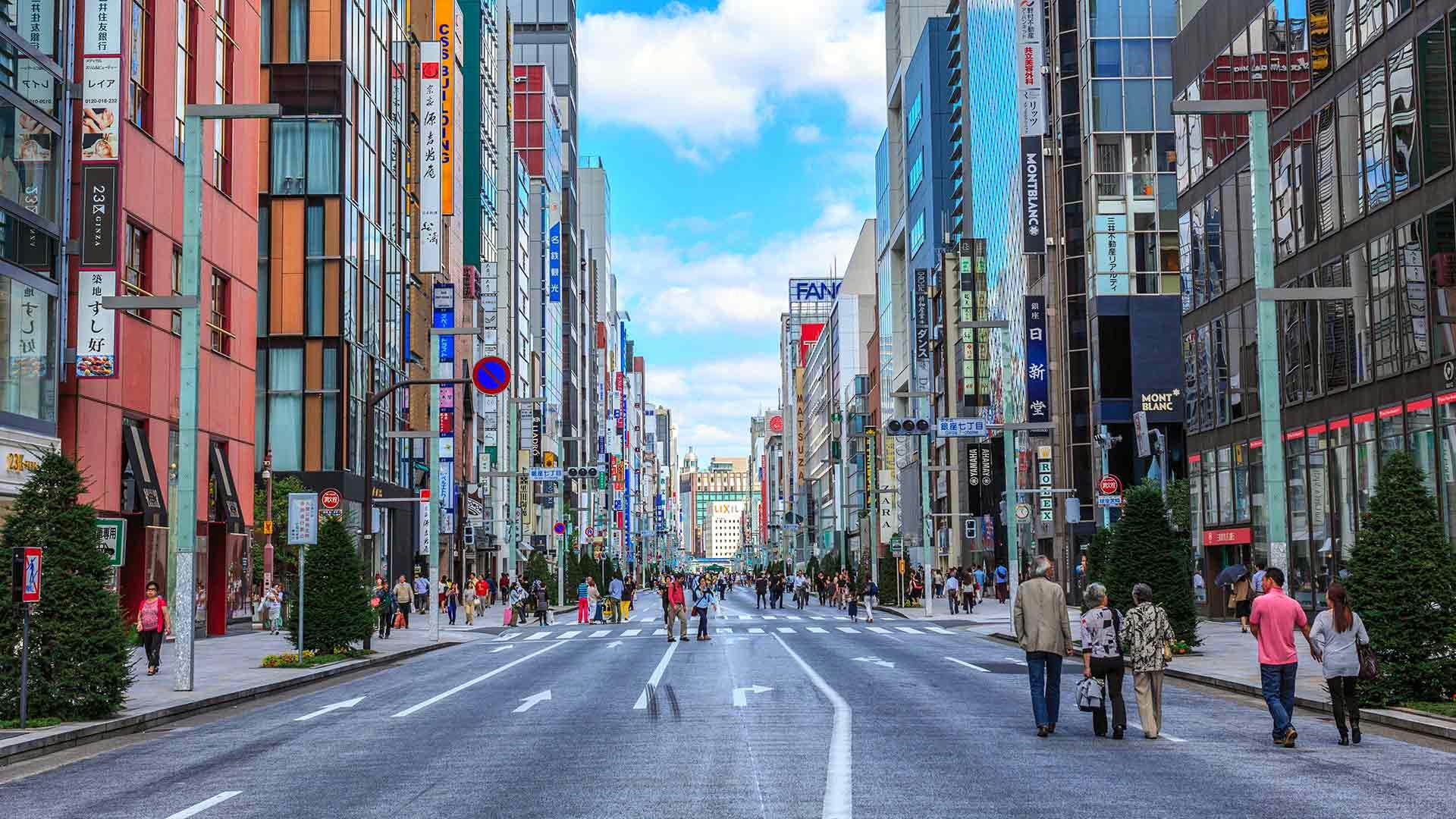
Ginza might look like the world’s fanciest window-shopping destination (because it totally is!), but here’s the cool part—you can explore incredible free art galleries tucked inside those gleaming department stores and luxury buildings.
The major stores like Ginza Six, Matsuya, and Mitsukoshi regularly host rotating exhibitions featuring everything from contemporary Japanese artists to traditional crafts, and you just walk right in without paying a yen.
Beyond the art, the district itself becomes an open-air architecture museum where you can spot beautifully preserved historic buildings standing proudly alongside ultra-modern glass towers—talk about a time-traveling experience on a single street!
Free Art Galleries and Department Store Exhibitions
The luxury department stores lining Chuo-dori aren’t just retail spaces—they’re free art museums in disguise!
Trust me, these climate-controlled havens showcase rotating exhibitions that rival paid galleries:
- Matsuya Ginza hosts contemporary street art installations on the 8th floor.
- Mitsukoshi features traditional Japanese crafts and ceramics.
- Wako offers evening gallery openings with complimentary refreshments.
Pure cultural freedom without spending a yen!
Architecture Walking Tour of Historic Buildings
Beyond glass storefronts and modern facades, architectural treasures from Tokyo’s past peek out between the designer boutiques, telling stories that stretch back over a century.
Historic facades showcase Western-influenced buildings from the Meiji era—think ornate columns and brick exteriors that survived earthquakes and wars!
Urban facades blend seamlessly with luxury shops, creating this amazing time-travel experience while window shopping.
Ueno Park and Cultural District Exploration
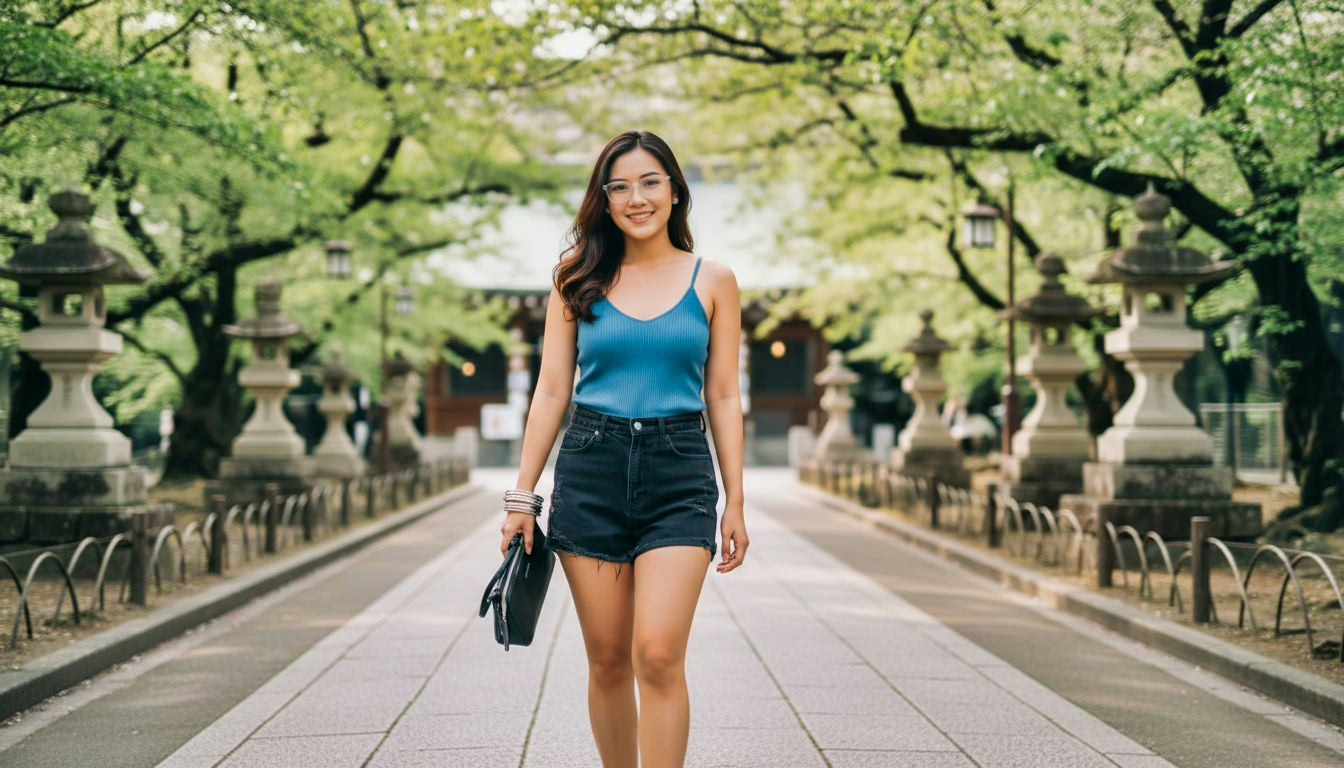
Ueno Park stands as one of Tokyo’s most rewarding free destinations, where visitors can explore world-class museum exteriors and expansive green spaces without spending a single yen.
The area around Tokyo National Museum and the National Museum of Western Art offers stunning architecture and peaceful gardens that anyone can enjoy from the outside.
The park’s central pathways wind past Shinobazu Pond—a gorgeous spot where you can watch lotus flowers bloom (in season) and observe local life without any admission fees.
Trust me, the zoo might charge entry, but you can still catch glimpses of the grounds and soak up the lively atmosphere around Ueno’s cultural district just by walking the perimeter!
Museum District and Park Grounds Tour
Ueno Park transforms into a budget traveler’s dream when you know the secret schedule—several world-class museums offer free admission days throughout the month, and outdoor exhibitions scattered across the park grounds cost absolutely nothing year-round!
The real magic happens when you venture beyond the main pathways where tour groups cluster, discovering tranquil side trails that wind past temple gardens and tree-lined ponds where locals practice tai chi at dawn.
Trust me, timing your visit to catch both a free museum day and those peaceful early morning hours turns this cultural district into an experience that rivals any expensive guided tour.
Free Museum Days and Outdoor Exhibitions
Why pay full price for world-class art when Tokyo’s museum district hands out free admission like candy on specific days each month?
Smart wanderers score completely free entry while exploring stunning art installations and outdoor sculptures across Ueno’s cultural hub.
Free admission goldmine:
- First Wednesday monthly at Tokyo Metropolitan Art Museum
- International Museum Day (May 18) grants access to multiple venues
- Children’s Day opens family-friendly exhibits citywide
Tokyo Free Museum Days: When to Visit Without Paying
Save hundreds on Tokyo museum visits by timing your trip with free admission days at top cultural ... Read More
Peaceful Walking Paths Away from Crowds
The museum district’s hidden corridors and lesser-known pathways offer sanctuary from the tourist stampede that floods Ueno’s main attractions during peak hours.
Slip behind the National Museum’s western wing to discover urban serenity along tree-lined footpaths.
These quiet escapes wind past Shinobazu Pond’s northern edge, where locals practice tai chi at dawn.
Trust me, wandering these forgotten routes beats fighting crowds any day!
Zoo Area and Pond Views Without Entry Fees
The areas surrounding Ueno Zoo offer fantastic viewpoints and gathering spots that won’t cost you a single yen—and trust me, these spots rival anything you’d see inside the gates!
Shinobazu Pond becomes your personal outdoor gallery, especially when you position yourself near the Bentendo Temple on its island or claim a bench along the northern shore where locals spread out their bento boxes.
Throughout the year, the park transforms with seasonal celebrations—from cherry blossom parties in spring to lotus flower festivals in summer—that bring out food vendors, performers, and that authentic Tokyo neighborhood energy you came here to experience.
Best Picnic Spots with Local Atmosphere
Sprawling across 133 acres in northeastern Tokyo, Ueno Park transforms into a local’s living room where families spread blankets, friends share bento boxes, and solo visitors soak up the atmosphere—all without spending a single yen!
These budget parks offer authentic local picnic experiences:
- Shinobazu Pond’s grassy banks – perfect sunset spots
- Cherry tree groves – year-round shade
- Temple plaza areas – quiet contemplation zones
Seasonal Events and Festivals Calendar
Beyond finding the perfect picnic spot, timing your Ueno Park visit around free seasonal events can elevate your experience from pleasant to absolutely unforgettable—and the best part?
Most seasonal events cost absolutely nothing!
Cherry blossom viewing parties in spring, lotus festivals in summer, and traditional dance performances happen regularly.
Watch locals prepare elaborate festival preparations, transforming the park into a cultural wonderland you’ll never forget.
Shinjuku Urban Jungle and Nightlife Preview
Shinjuku is like Tokyo on steroids—seriously, this district transforms from a business powerhouse during the day into an electrified wonderland once the sun goes down!
The skyscraper zone around Shinjuku Station might seem intimidating at first (trust me, even the locals get lost in that mega-station), but maneuvering this concrete jungle during daylight hours reveals free observation decks, hidden shrines tucked between buildings, and some of the city’s most photogenic urban landscapes.
Then, as evening hits, the whole area flips a switch: neon signs blaze to life, tiny alleyways packed with izakayas start buzzing with energy, and you’ll understand why Shinjuku’s nightlife is absolutely legendary.
Daytime Skyscraper District Navigation
Shinjuku’s towering concrete giants might seem intimidating at first, but here’s the secret most tourists miss: some of the best views in Tokyo won’t cost you a single yen!
The Tokyo Metropolitan Government Building offers free observation decks that rival their expensive competitors, and trust me, your wallet will thank you when you’re gazing at Mount Fuji from the 45th floor.
Between all that urban intensity, peaceful gardens and hidden temple courtyards provide the perfect escape when the sensory overload gets real.
Free Observation Decks in Government Buildings
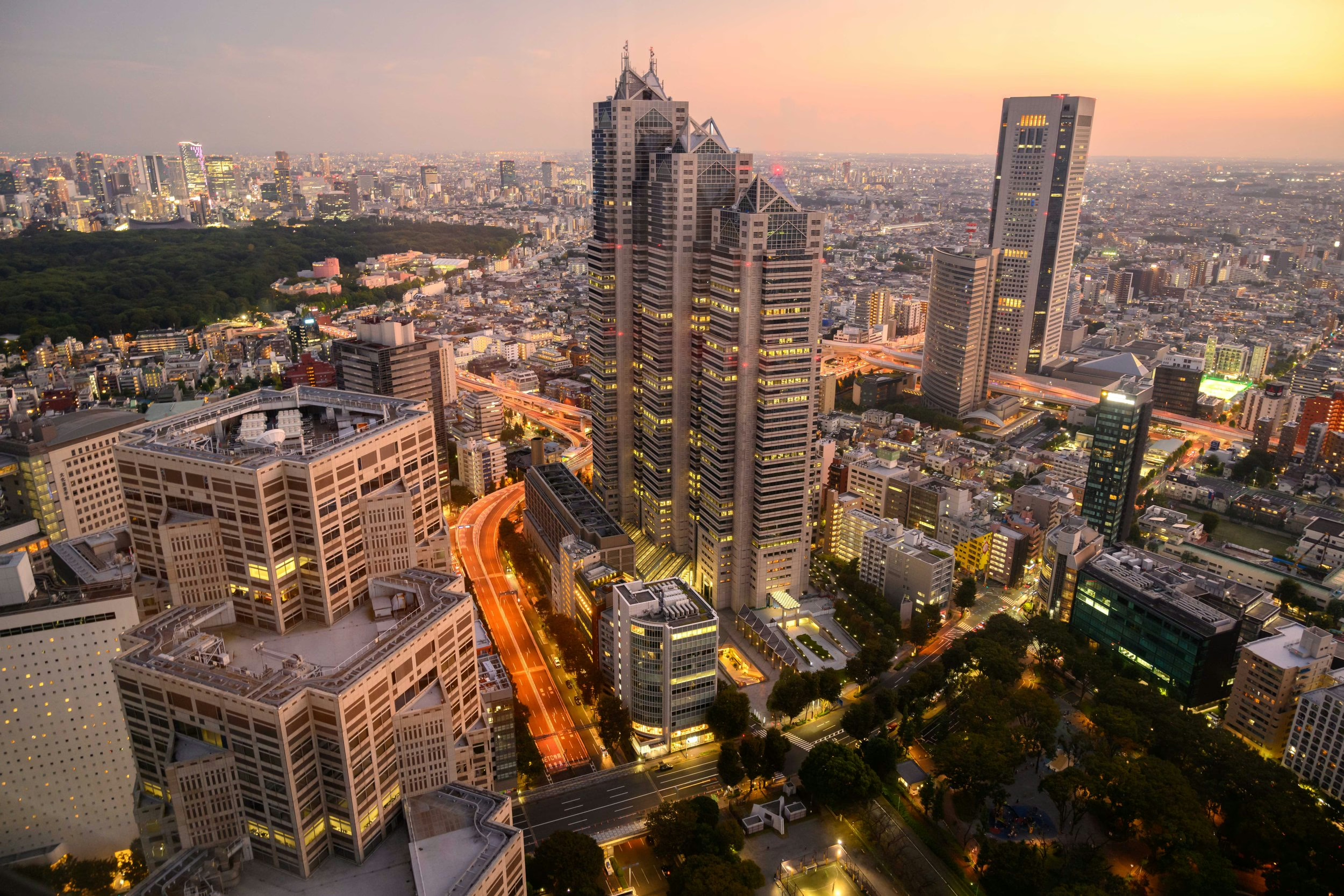
The Tokyo Metropolitan Government Building offers something most tourists don’t realize exists: completely free observation decks with views that rival (and sometimes beat) those expensive tower tickets everyone shells out ¥2,000 for.
Here’s what makes these government buildings worth your time:
- North and South Towers reach 202 meters high
- Open until 11 PM for incredible night views
- Zero admission fee means more budget for ramen
Trust me, your wallet will thank you!
Hidden Gardens and Quiet Spaces
Tucked between towering office buildings and bustling streets, pockets of serenity exist that most visitors rush right past without even noticing.
These hidden alcoves offer genuine peace—totally free!
Secret pathways wind through traditional Japanese gardens where salarymen actually nap during lunch breaks.
Who needs expensive temple admission when Shinjuku’s urban oases deliver authentic tranquility?
Trust me, discovering these spots feels like revealing Tokyo’s best-kept secrets while everyone else queues elsewhere!
Evening Transformation and Neon Light Tours
As darkness falls, Shinjuku transforms into an absolutely electrifying wonderland of neon signs, glowing billboards, and crowds of people heading out for the night—and trust me, you’ll want to experience this safely while soaking it all in!
The best approach is sticking to well-lit main streets through entertainment areas like Kabukicho (Tokyo’s famous nightlife district), where you can observe the organized chaos from a comfortable distance without wandering into sketchy side alleys.
Plus, Japan’s legendary 24-hour convenience stores (called “konbini”) become evening destinations themselves, offering cheap snacks, hot food, and a fascinating glimpse into how locals grab late-night meals between karaoke sessions and bar hopping.
Safe Walking Routes Through Entertainment Districts
Shinjuku transforms into something completely different once the sun goes down—and trust me, this evening spectacle deserves its own walking route!
Safe entertainment district exploration includes:
- Golden Gai’s tiny bar alleys (perfectly safe to photograph)
- Kabukicho’s bright main streets where street food vendors gather
- Omoide Yokocho’s local markets selling grilled skewers
Stick to well-lit areas and you’ll experience Tokyo’s electric nightlife without spending a yen!
Late Night Convenience Store Culture Experience
Between neon-gazing sessions, every savvy Tokyo walker discovers that convenience stores—known locally as “konbini”—become unofficial rest stops and cultural experiences rolled into one fluorescent package.
Trust me, late night snacks at FamilyMart or 7-Eleven reveal convenience store quirks you won’t find elsewhere: oden simmering in countertop vats, premium soft-serve ice cream machines, and seat-warming toilet seats in spotless bathrooms.
Freedom tastes like onigiri at 2 AM!
Money-Saving Tips and Local Insider Secrets
Smart travelers know that Tokyo’s walking tours become even better when you’re not constantly worrying about spending money on necessities!
Finding free, clean bathrooms throughout the city (trust me, they exist in every convenience store, major train station, and department store) and knowing which IC card tricks can shave precious yen off your transportation costs will keep your wallet happy.
How to Save Money on Tokyo Attractions With Discount Passes
Wondering how to experience Tokyo's dazzling attractions without emptying your wallet? Discount ... Read More
These insider secrets transform your free walking experience from budget-conscious to genuinely cost-free, letting you save those yen for the really good stuff—like that amazing ramen you’ve been eyeing or those quirky souvenirs in Harajuku.
Free Bathroom Locations and Rest Stops
Walking around Tokyo for hours means you’ll eventually need a bathroom break—and trust me, knowing where to find clean, free facilities can make or break your tour!
Department stores like Tokyu Hands and Marui offer spotless restrooms that locals treat as their secret weapon during shopping trips.
Major parks (think Yoyogi or Ueno) provide well-maintained public facilities that won’t cost you a single yen.
Tokyo Onsen Etiquette: Hot Spring Rules & Cultural Significance
Learn Tokyo's sacred onsen rules—from pre-bath rituals to tattoo policies—that transform hot ... Read More
Tourist information centers scattered throughout the city also welcome visitors with free bathrooms, plus they’re usually air-conditioned, which is a massive bonus during Tokyo’s sweltering summers!
Department Store Rest Areas Locals Use
When exhaustion hits during a long day of Tokyo exploration, department stores become unlikely sanctuaries that savvy locals have relied on for decades.
These climate-controlled havens offer more than shopping—they’re perfect rest stops!
Top department store rest areas locals use:
- Takashimaya – Spacious seating areas near food floors
- Mitsukoshi – Elegant lounges with comfortable chairs
- Isetan – Quiet corners between fashion departments
No purchase required, just walk in confidently!
Park Facilities and Tourist Information Centers
Beyond the air-conditioned comfort of department stores, Tokyo’s extensive network of public parks and tourist information centers provides equally welcoming spaces to catch your breath without spending a yen.
Major parks like Ueno and Yoyogi offer clean restrooms and shaded benches—perfect for regrouping!
Tourist info centers throughout the city provide free maps, English assistance, and (trust me) surprisingly comfortable seating.
These park amenities become your budget-friendly sanctuary.
Transportation Hacks Between Walking Routes
Tokyo’s train system can drain your wallet faster than you can say “sumimasen,” but smart travelers know exactly which day passes are worth buying and which routes are better covered on foot.
The truth is, many of Tokyo’s famous districts sit surprisingly close together—Harajuku to Shibuya is a 20-minute walk, and you’ll save ¥200 every single time you skip the train!
Mastering these walking connections between neighborhoods, combined with strategic use of discount passes only on days when you’re hitting distant spots, can easily save you ¥2,000-3,000 per week.
Day Pass Strategies That Actually Save Money
Here’s when day passes actually make financial sense:
- Tokyo Metro 24-Hour Ticket (¥600): Perfect for hitting Shibuya, Harajuku, Asakusa, and Ueno in one ambitious day.
- Group passes: Traveling with friends enables ticket discounts on JR’s Tokunai Pass.
- Weekend exploration: Maximize value by cramming multiple neighborhoods into Saturday adventures.
Walking Connections Between Major Districts
Smart travelers discover that several of Tokyo’s most popular districts sit close enough together that walking between them actually beats waiting for trains.
The Shibuya-to-Harajuku route takes just 15 minutes and treats you to incredible public art along Omotesando Boulevard.
Ginza connects to Tsukiji in 20 minutes, where street performers often entertain near the outer market.
Trust me, your wallet will thank you!
Wrapping Up
Tokyo’s walking routes offer an urban odyssey worthy of any great explorer—no golden fleece required, just comfortable shoes!
These self-guided adventures prove the best things in life (or at least in Tokyo) really are free.
You’ve got seven incredible routes mapped out, money-saving tricks up your sleeve, and the whole city waiting to be discovered.
So lace up those sneakers and start your Tokyo journey today—your wallet will thank you!

